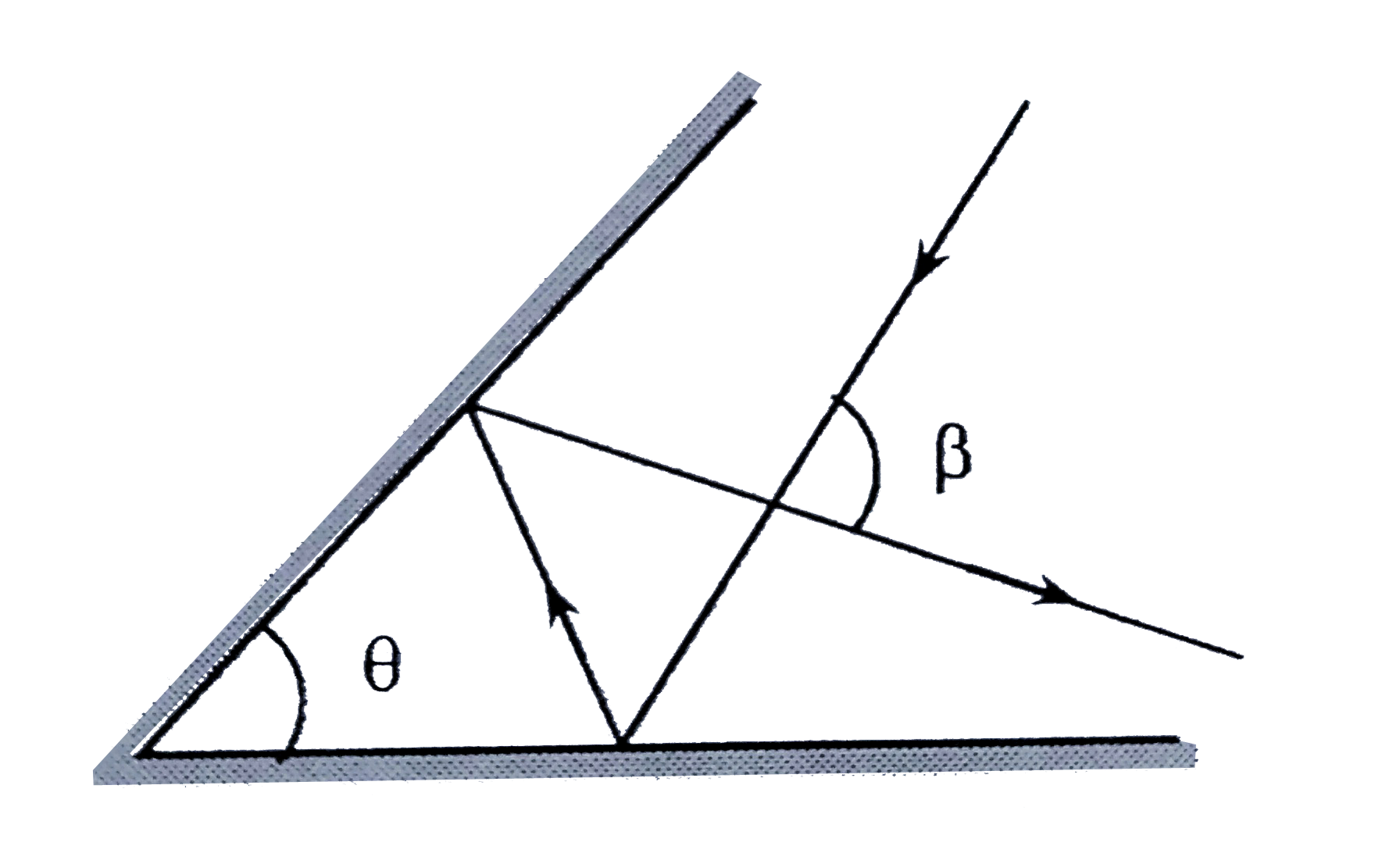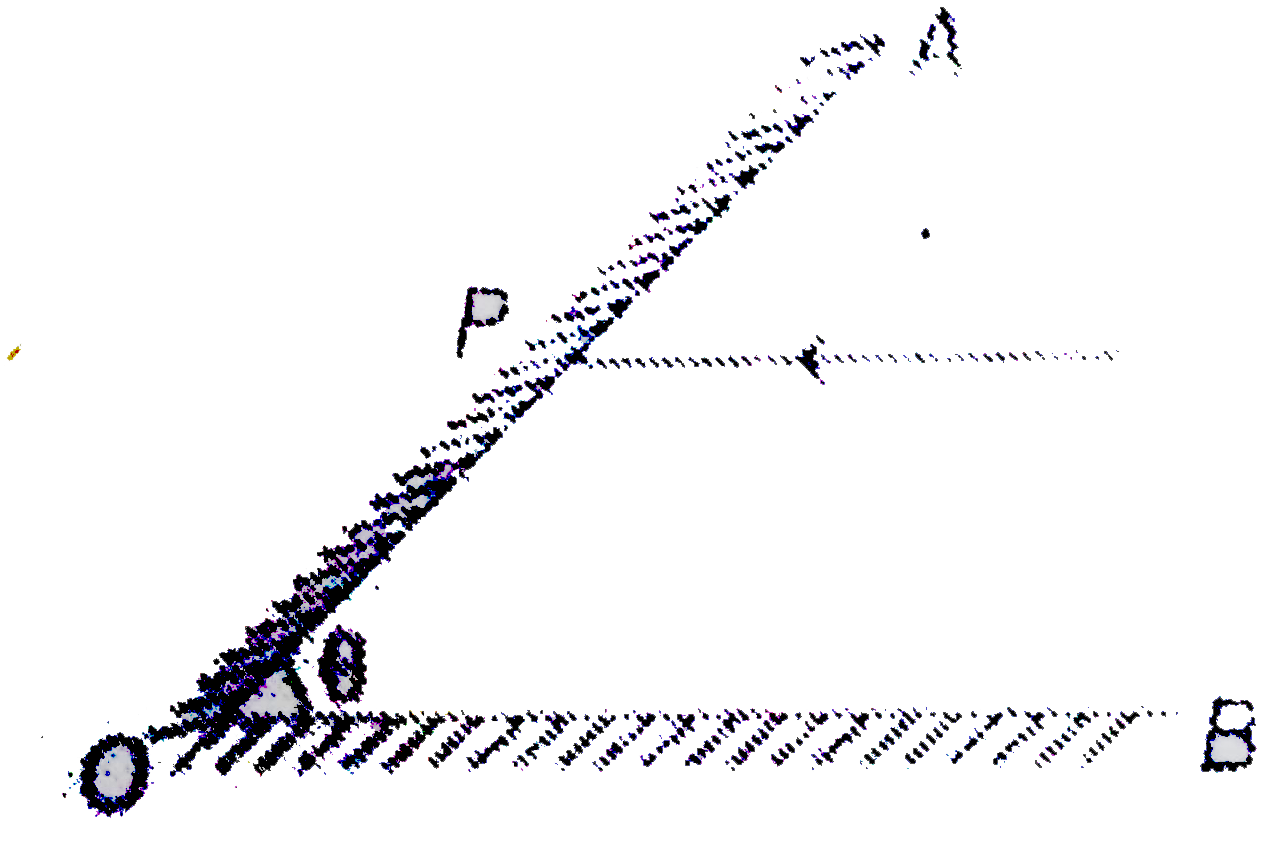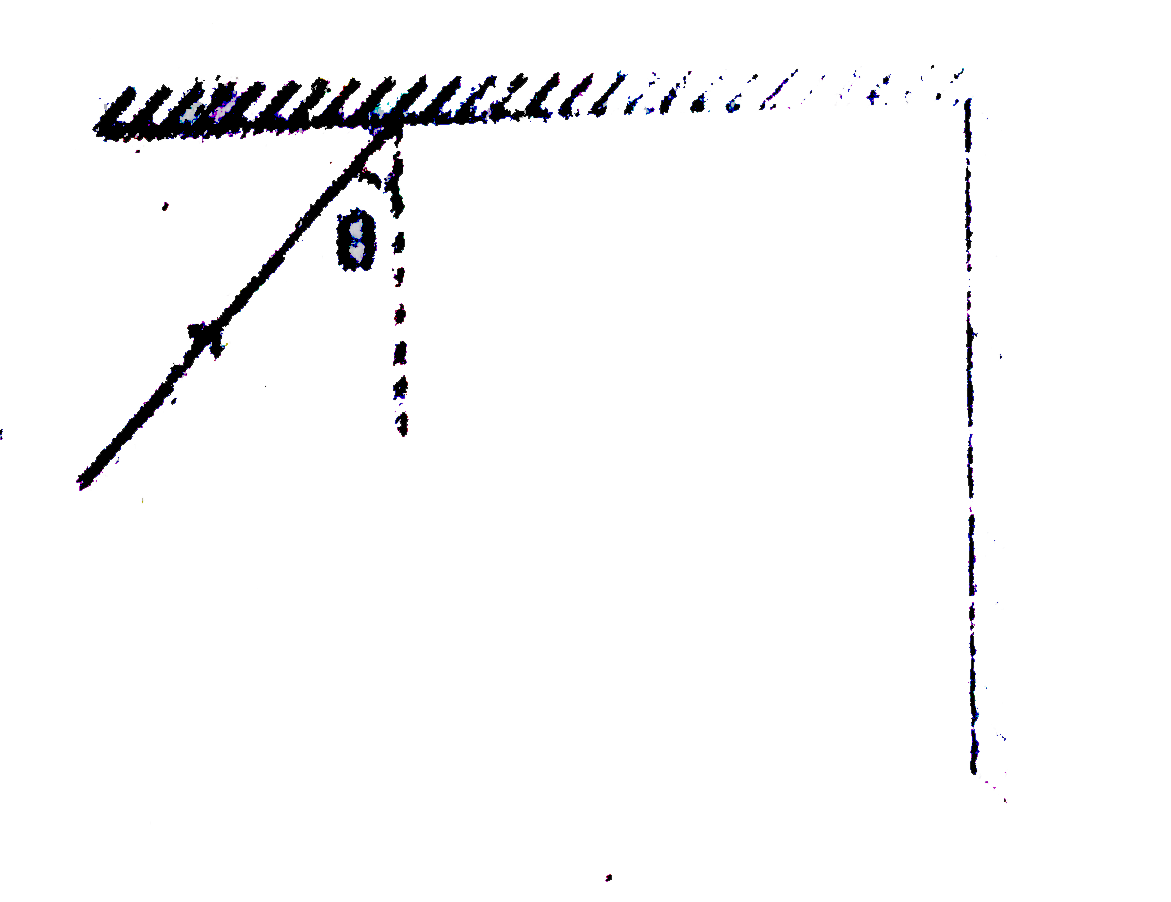The reflecting surface of two intersecting flat mirrors are at an angle θ(0∘<θ<90∘). As shown in Figure. For a light ray that strikes the horizontal mirror, the emerging ray intersects the incident ray at an angle β . If one of the mirrors is rotated at dθdt=1∘/s, then the angle β changes aat the rate of

1∘/s
2∘/s
−1∘/s
−2∘/s
The correct Answer is:D
From geometry β=(180∘−2θ)
So, dβdt=−2dθdt
Similar Questions
Two plane mirrors are inclined at an angle of 60∘ as shown in Figure. A ray of light parallel to M1 strikes M2. At what angle will the ray finally emerge?

View SolutionTwo plane mirrors are inclined at angle θ as shown in figure. If a ray parallel to OB strikes the other mirror at P and finally emerges parallel to OA after two reflections then θ is equal to

View SolutionIf the reflected ray is rotated by an angle of 4θ in clockwisse direction then the mirror was rotated by
View SolutionWhen a ray of light strikes a plane mirror along the normal, the angle of incidence is :
View SolutionA ray of light is directed towards a corner reflector as shown. The incident ray makes an angle of 22∘ with one of the mirrors. At what angle θ does the ray emerge?

View SolutionTwo plane mirrors are arranged at right angles to each other as shown in figure.A ray of light is incident on the horizontal mirror at an angle θ. For what value of θthe ray emerges parallel to the incoming ray after reflection from the vertical mirror ?

View SolutionA ray of light is reflected by two perpendicular plane mirrors as shown. The angle θ is equal to:

View SolutionTwo plane mirrors are making an angle of 60∘ to each other. A light ray falls on one of the mirrors. The light ray is incident parallel to angular bisector of mirrors. How many reflection does the light ray undergo?
View SolutionA light ray strikes a horizontal plane mirror and gets deviated by π/3. By what angle should the mirror be tilted so that the reflected ray becomes vertical?
View SolutionA mirror is inclined at an angle of θ with the horizontal. If a ray light is incident at an angle θ as shown , then the angle made by reflected ray with the horizontal is
_E01_002_Q01.png)
View Solution

